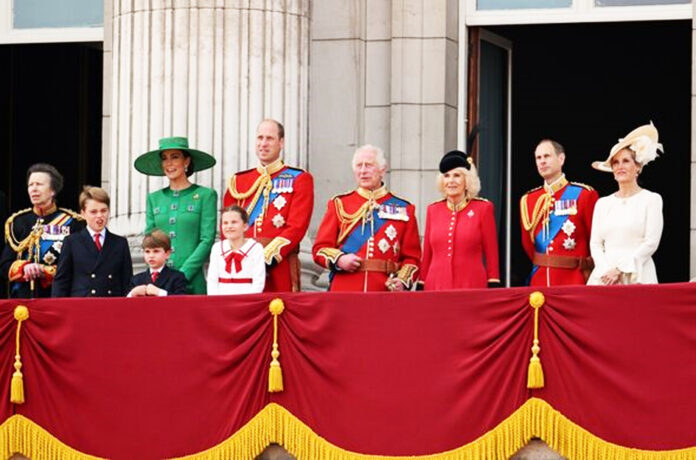The British Royal family live their lives in the public eye, but there’s one thing about them that not a lot of people know: Their last name.
That’s simply because, in general, they don’t need a last name. They’re so famous that they’re easily identifiable without one.
When members of the royal family need to use a last name — when they’re in school or in the military, for example, they actually have a few choices. Here’s a breakdown of all their options — and how it got to be this way in the first place.
Before 1917, royals didn’t use last names at all.
Back then, royalty had only their first names and the name of the house or dynasty they were part of, according to the Royal Family’s official website. You’ve probably heard of some of these dynasty names, like the House of Tudor and the House of York.
In 1917, when King George V had been on the throne for seven years, he decided to change the house name from Saxe-Coburg-Gotha to Windsor. He made the switch because of anti-German sentiments brewing at the start of World War I (the Saxe-Coburg-Gotha name was of German origin). “Windsor” came from Windsor Castle, one of the royal family’s properties.
But he wasn’t just changing the dynasty name. George V also specified that Windsor was to became the royal family’s official surname, too.
When Queen Elizabeth II came to power, she made a slight modification
In 1947, princess Elizabeth (George V’s granddaughter) married Philip Mountbatten, a former Greek and Danish prince who had joined the British Royal Navy. Just a few years later, the young couple were thrust to the very top of the monarchy: Elizabeth’s father died, making her Queen Elizabeth II. Mountbatten became Prince Philip, Duke of Edinburgh.
In 1960, Elizabeth and Philip decided that they wanted to differentiate their particular branch of the royal family tree from all the others. They decreed that their descendants would carry the hyphenated last name Mountbatten-Windsor.
There’s one exception, though: Any royal with the title “His Royal Highness Prince” or “Her Royal Highness Princess” doesn’t need to use a surname at all. They can use Mountbatten-Windsor if they need to (the Queen’s daughter, Princess Anne, used it on her marriage certificate in 1973, for instance) but it’s not an obligation.
Royals don’t always use the Mountbatten-Windsor name, though.
Some members of the royal clan have used their family’s territorial designation instead. For example: When Prince William and Prince Harry served in the military, they went by William Wales and Harry Wales — because their father is the Prince of Wales. And The Daily Beast reports that Princesses Eugenie and Beatrice have gone by Eugenie York and Beatrice York, since their father, Prince Andrew, is the Duke of York.
There are few other last names kicking around, too: Princess Anne’s kids simply took their father’s last name — Phillips. And the daughter of Prince Edward, Earl of Essex, just goes by Windsor, without the Mountbatten.
As the Royal Family’s official website notes: “A proclamation on the Royal Family name […] does not pass into the law of the land.” No one’s really forced to use the official surname, and newly crowned kings and queens aren’t bound to follow the surname rules set by their predecessors.
The bottom line: Unsurprisingly, the complicated royal family has a complicated buffet of acceptable surnames. Technically, their last name is Windsor, though direct descendants of the queen can use Mountbatten-Windsor if they ever need it. Some royals use territorial names, but most — including the young Prince George and Princess Charlotte — stick to first names only.









